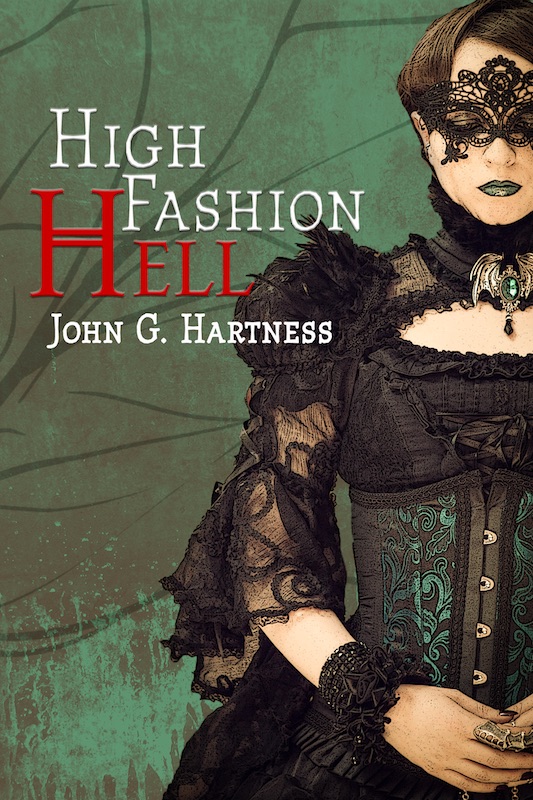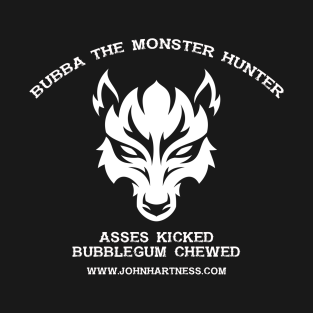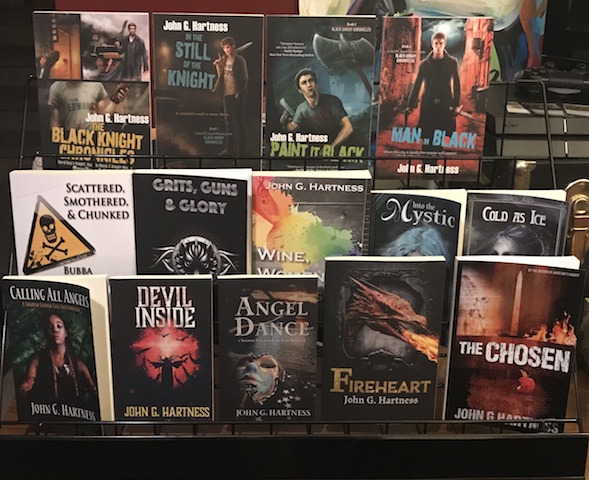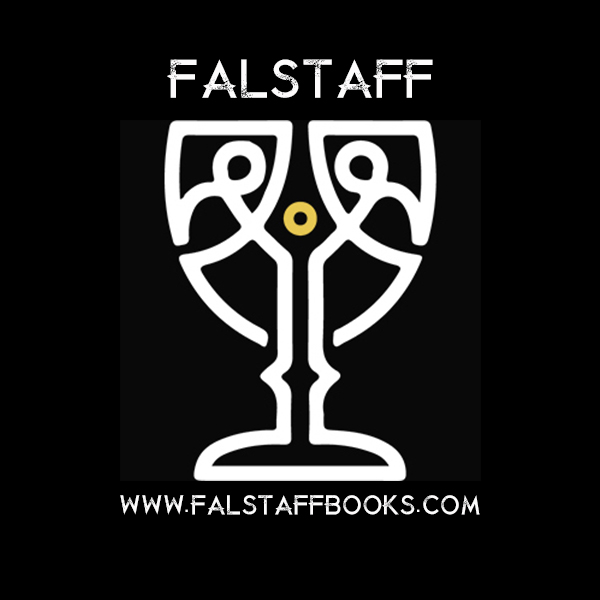
by john | Jun 28, 2017 | How to Sell Books, Writing
So yeah, that’s a total clickbait headline. It’s also not true. But it kinda is. Like so many things, the concept of Write to Market has diverged from its original core values into a set of weird “truths” and market and career advice ideas that it has turned into a whole messianic movement.
Let’s start with a basic question – What is “Write to Market?” Chris Fox, a successful midlist genre fiction author, wrote a series of books about how to be a successful author, focusing on many of the things that I tell new and aspiring writers to focus on – writing speed, production speed, don’t get caught up in revising forever, produce the work, you’ll sell more in a popular genre than in a niche genre – all very level-headed, common sense advice. These books caught on, and some people managed to take the tips and tricks that Chris write in these books and turn them into some very successful series, almost overnight.
EDIT – So Chris came on to comment and clear up some of my inaccuracies. According to Chris, and I have no reason to doubt him, he sold enough copies of his book written with the Write to Market theory to hit the NY Times list. I believe him, and congratulate him on that success. I think it’s awesome. My guess that his non-fiction stuff outsold his fiction stuff came from five minute of looking over his ranks on one series. I apparently missed the stuff that sold the best. My bad. He says he outsells me, which puts him in good company. Rock on. I am sincerely happy whenever anyone sells books. Chris obviously sells a lot of fiction, which does lend more credence to the words that he preaches. It does not, however, change the fact that most of the people advocating write to market are not saying the same things he’s saying, and are saying that you can write crap and make money. I still think that’s a load of shit.
Good for them. That’s awesome.
Then a lot of other people looked at it, decided that it was a great way to make a lot of money in the easy life of a writer, and it all went to shit.
Let me clarify something before I go much further. One, when I call Chris Fox a successful midlist genre fiction author, please don’t consider that any type of insult. I briefly looked at the rankings of his fiction books on Amazon, and it looks like he sells some books. Probably a decent number. Rock on. To me, that puts him in the same category as me and most of my peers who haven’t made it onto a major bestseller list.
But just like a couple years ago people were holding Hugh Howey up as the messiah of all things self-pub, nowadays Write to Market is the Hot New Thing. It’s the Guaranteed Way to Quit Your Day Job and Live the Easy Life of a Novelist! But here’s the thing – that’s a load of shit.
No, I don’t work a day job. No, I am not wearing pants write now, at 3PM. No, I didn’t have to call in to anyone all week the I felt like refried ass and didn’t want to work because I had a stomach bug.
I also don’t know how much money I’m going to make from month to month, I work as many weekends as I do weekdays, and I put in as many hours at work now as I did when I was a middle manager with a dozen people reporting to me. So I don’t have a day job, but unlike some folks, I’m not cruising around on my boat butt-nekkid waiting for my movie to come out.
Don’t visualize. There is no Visine for the mind’s eye.
Please understand – a lot of Chris Fox’s principles are things I agree with. Yes, you need to write fast. Yes, you should probably start your career working in a genre that people will actually read. Yes, you should do some market research before you launch a book. I’ve said many times, in many places, that the idea of writing a book and just letting it float out there on its own is one that should have died when Salinger did. But really, it should have died with Dickinson.
The problem is, nowadays you have a lot of people jumping in the “write to market” pool, looking to make a quick buck. So there’s a lot of folks on lots of internet sites focusing on analyzing market trends, looking for hot genres to capitalize on, talking about forgoing editing in favor of computerized proofreading tools (It’s a TRAP!), and how a good cover and solid story will make up for all the weaknesses in your craft.
Those people are full of shit and will either change their tune or will be out of this industry in a very short time.
While it’s possible to look at a popular genre without a ton of competition in it, dissect the tropes of the successful books in the genre and write a formulaic book to hit all the buttons and sell a bunch of copies, is that really any way to build a career?
Let’s say I want to make a pile of money selling books. I hear that shifter romance is hot, so I decide to write a shifter romance. I buy twenty or so of the bestselling books in that genre, read them, understand the story beats, figure out how they’re put together, and plot out a six-book shifter romance of my own. I write them as fast as I can, pay nominal attention to the editing and the craft, get a decent cover, put the books up on Amazon, and watch the money roll in.
I can probably make a decent chunk of change over the next six months doing that. Then the winds change, the genre cools, and I have to chase the next trend. Again and again and again. How often can you stand to do that? At what point are you no longer doing the thing that made it fun to write in the first place – creating? How long can you stand to follow that mechanical process before it becomes as mind-numbing as the day job you were dying to leave in the first place?
That’s kinda my point, and why I say that despite the fact that Chris’s original principles are things that I think people can apply to successful career creation, the bandwagon-jumpers who are looking to make a quick buck are missing the whole point of writing to market – writing.
You can go online and find a lot of people telling you that editing doesn’t matter, that a good story is all that matters. They’ll point you to a dozen big-selling indie authors whose books are really mediocre as far as the craft, and those folks are moving huge numbers.
Today.
Come back to me in ten years and let me know how those folks are doing. Because I’m seven years into this journey, and I’ve figured a few things out. One of them is that it’s a marathon, not a sprint, and most of the “overnight successes” that I’ve known haven’t been that overnight at all. So if I’d rather listen to advice from folks like Dean Wesley Smith and Kris Rusch and Kevin J. Anderson and Faith Hunter and Chuck Gannon and Ed Schubert, who have been in the business for decades by now, then maybe I’ll just stick with those folks.
The thing is – you can jump on a bandwagon and make a pile of money. But you won’t make millions. You won’t make the kind of money that lets you jump on a boat and sail naked around the world (unless you catch lightning in a bottle). You can make enough money to make a living by dissecting a trend and writing to a trend, then jumping to the next trend and doing it all over again, ad nauseum.
But you can also make a living by writing the books you want to write, as well as you can possibly write them, about whatever the hell you want to write about. I wrote a book about Sasquatch’s dick. Robert Bevan has a whole series about poop jokes and killing horses. Rick Gualtieri, Drew Hayes, and I have ALL written very different books about nerdy vampires. Joe Brassey has a book coming out about sky pirates. These are all successful authors. These are all people writing whatever the fuck they want to write, working hard on their craft, putting out the best product they know how to produce, and putting food on the table while they do it. And I would lay a lot more money on these guy being around in five years than on any of the latest get rich quick schemers that want to write shifter porn just because it’s the hot thing right now.
So to close – Chris Fox had some good ideas, and did a great job of branding himself as an expert on selling books. So much so that his books on how to sell books outsell all of his fiction, so good job. But then a bunch of people who want to shortcut the learning of craft have taken his ideas and turned them into bullet points and now are waving flags for WRITE TO MARKET IS THE ONLY WAY TO MAKE TEH MONEYZ OMG U CAN MAKE TEH MILLIONZ 2MORROW!. So read Chris’s books. There are some good ideas there. You probably do need to write faster, and you probably do need to focus your efforts on a more popular genre rather than writing that antebellum retelling of the Mahabharata set in a far-future Venutian colony.
But you don’t need to cut out your editing. You don’t need to not learn the craft. And you sure as balls don’t need to turn your dream of being a writer into another soulless day job where all you do is dissect someone else’s creativity and regurgitate it for money. That kind of assembly-line shit will get old real fast.
And if you’re looking for advice on how to sell books – make sure the person giving the advice sells more books of fiction than books on HOW TO SELL fiction. Because the folks that have walked the walk, can talk the talk.

by john | May 16, 2017 | Business of publishing, How to Sell Books, Promos/Giveaways
Last time around, we talked about the two types of email list subscribers – incentivized subscribers and organic subscribers. Organic subscribers are the ones that come to you naturally, they are interested in you or your work, and they seek you out and sign up of their own free will. These are the unicorns of email list subscribers – they’re lovely, they’re beautiful, and may very well be mythical.
Nah, not really. But while they are the best type of subscriber, they are also the toughest to acquire, and the ones that require the most effort to cultivate. They are the folks that sign up from convention appearances, from links in the back of your books (you do have a link to your newsletter signup page in the back of your ebooks, don’t you?), or just from finding you on Facebook or the interwebs.
The other flavor of subscriber is much more prevalent, and they are the ones who subscribe because you give them something for signing up. I call these incentivized subscribers, and while it may seem at first blush that I value them less than organic subscribers, that’s not true at all. They just require different care and feeding.
Organic subscribers are easy to keep, but much harder to get in the first place. Incentivized subscribers are easier to get in the door, but much harder to keep once you have them. Both type of subscriber can turn into true fans over time, you just need to know what kind of cultivation you’ll have to do for each one.
There are good and bad ways to incentivize people signing up for your newsletter, and multiple methods of each. My favorite method of getting people to sign up for a newsletter is to give them a free ebook. I offer a free Quincy Harker short story, High Fashion Hell, to new subscribers. If you aren’t already on my email list, you can click here to join and get your free ebook. This story is available for sale, and it’s also available in an anthology, but there have been hundreds of copies of it claimed by people signing up for my email list since I started giving it away. So there is still some incentive to sign up, even with a story that is available elsewhere.
The way this works is – people see the link, click the link, and they are taken to a signup form on Mailchimp. Once they fill out the signup form, and confirm their email address, they receive another email that directs them to a page on BookFunnel. Book funnel hosts the ebook file and sends it to people in whatever format they request, for Kindle, Nook, iPad, whatever. You don’t have to put anything else in place. Mailchimp costs a monthly fee based on the number of email addresses on your list, and Bookfunnel charges based on the number of downloads per month.
I pay $25/ month for MailChimp and $10/month for BookFunnel. I also pay $20/month for Instafreebie, another service I use to send out ARCs and rewards. I’ll talk more about IF in a later post. With Hootsuite, another service I’ll talk about later, I spend about $60/month in automation and services to help with my marketing. As my lists and reach grows, so will that number. Nothing in life is free, and if it is, it’s probably worth what you pay for it. Hell, I even have a blurb at the end of this post asking for money, so this advice isn’t even really free. (BTW, if you think this advice is valuable and want me to continue making posts like this, feel free to join my Patreon.)
So how do you boost your numbers quickly? Well, there are a couple of ways. First, you can do newsletter swaps with writers that have more subscribers than you. Or even writers with the same number of subscribers as you, because they’re almost certainly different subscribers. Here’s how that works – A few months ago, Eric Asher set up a six-author mailing list swap. Each author sent out a newsletter to their list with everybody else’s book cover in it, and built a link in the cover to that author’s signup page. So all the people on Eric’s list who clicked on the High Fashion Hell cover got the chance to sign up for my email list. All the people who clicked on Eric’s cover in my newsletter got the chance to sign up for his list (and get some awesome free books. Go to his website. Sign up for the list. Tell him I said Hi).
I gained several hundred new subscribers, because they wanted free ebooks. A lot of them stuck around, because they were already pre-sorted as people who wanted to read the kind of stuff I write, because Eric and I write in similar genres. Those are incentivized subscribers, but they’re vetted leads, and much more likely to become “sticky” than a blind signup in my next example.
That’s a good way to incentivize signups – you aren’t spending much cash, and the thing you’re giving away is something that people who want to buy your books will want, but the general populace will have little interest in. Someone who doesn’t read will have no interest in signing up for my email list to get a free ebook. But they might want a free iPad!
Yeah, big-ticket giveaways aren’t worth a shit. They just aren’t. There is some value to giving away something like a Kindle Paperwhite, but a Kindle Fire or an iPad has just as much value to a non-reader as it does to a reader, and even with a PaperWhite, there’s no guarantee that the winner will read in your genre. If you write paranormal romance, you aren’t going to get a whole lot of value if a Chris Kennedy fan wins a Kindle from you. But if you like Military Sci-Fi, check Chris out. He’s good people.
The stickiness of a subscriber who joins up for a big-ticket giveaway like that is much, much lower than someone who signs up to get a free ebook. When I’ve done big massive email list building promotions, I see a lot of quick signups, then a lot of quick unsubscribes as soon as they get the first newsletter. And that costs money, not just in the cost of the item given away, but also in the escalation of your mailing list numbers, which costs more for MailChimp. So be careful about participating in those kind of campaigns. I just don’t think they’re worth it.
So what should you do if you’re just starting out trying to build an email list?
- Set up a MailChimp Account. This will manage the list so yo don’t have to fuck around in Excel or Access or something else awful. If you don’t like MailChimp, find another email list service. But use something of that ilk.
- Set up Automation so that you as soon as someone signs up for your list, they get a welcome email from you. This is where you can set up your giveaway as well.
- Set up a BookFunnel with a free ebook to lure subscribers in. It can’t be anything that’s available in Kindle Unlimited, but it also doesn’t have to be a novel. I feel like too many writers give away the farm to get email subscribers. If you’ve only got two novels published, don’t give one of them away for an email address. Write a prequel novella, or even short story, and use that as bait.
- Put a widget on your website with a link to drive signups. The book cover with a “Sign up for my Email List” tag is all you need.
- Create a Call to Action button on your Facebook Author page that is a signup button for your email list.
- Automate your Twitter and Facebook (or other social media outlets) to send out one message every day reminding people that they can get free shit by signing up for your email list. Every. Single. Day. Yes, even you, with one book out. Don’t do it every hour, but do it every day. Less than 20% of your FB contacts see the things you post, so you have to post frequently to get them out there. I don’t care if you think it’s annoying, shut up and do it. I’ll teach you how to Hootsuite later.
- Find some other authors who have shitty newsletter numbers and do a swap with them. Find other writers in your genre and do a newsletter swap with them. See if your publisher will send out a newsletter with your book cover linking to a newsletter signup page.
- Find authors who like you that have much bigger lists who will let you ride their coattails a little and do a newsletter swap with you. Don’t use this willy-nilly, and don’t email me. If everybody that reads this emails me, I’ll be overwhelmed. I might even get ten emails, given the traffic I get here. 🙂
- Communicate with your list regularly. At least once a month. Don’t consider it spam. Don’t consider it bothering people. Your readers, as much as you love them, aren’t your besties. They are your customers, and your job is to make sure they know about everything you have out there that they can buy. So go get their money!
That’s a pretty good primer on building an email list. I hope it’s been helpful. If you think I missed something, hit me up in comments. If you think I’m an idiot, then you probably shouldn’t have read this far and should go do something more fulfilling. 🙂 If you think I’m brilliant, buy all my shit. Or click the link for my Patreon.

by john | May 2, 2017 | Business of publishing, How to Sell Books, Promos/Giveaways
This is not going to be exciting. None of these posts in this series are going to be exciting. I’m not going to tell you how to jump up the bestseller lists and go from selling five books each month to 5,000 in the span of thirty days. I’m not going to tell you The Secret To Becoming An Amazon Bestseller. I’m not going to tell you how to Make A Million Dollars Selling Ebooks.
I’m not going to do any of that crap. Because those posts are bullshit. The only people getting rich off the words in a bunch of How To Sell Ebooks books are the people that wrote the book. And I’m giving this shit away, so I’m obviously an idiot.
But I’m an idiot who makes a living selling books. So that puts me ahead of most idiots out there.
I pay my bills and feed my family off my writing. Most writers can’t do that. We live modestly, and we try to manage our spending, but we are a single-income family, and that income grows out of my writing. These posts will try to give you some of the tools that I use to sell more books. I’m not looking to make anyone (except me) into the second coming of Stephen King. I just want to help you find more success in your writing.
So let’s start with the basics – a mailing list. You’ve heard you need one, but you don’t know shit about how to build one. You don’t know what a newsletter should look like. You don’t know how to get people to subscribe to it, and you don’t know how to create one that doesn’t look like it was drawn by a three-year-old epileptic chimpanzee. So let’s start there.
Yes, you need a mailing list. Your newsletter is the single most important piece of marketing material that you have, with the exception of writing amazing books. People who sign up for your newsletter, for the most part, are already interested in you and your work. So first you have to create a mailing list, and figure out how to send a newsletter. Then we’ll move on to how to get people to sign up for your mailing list.
Mailing List Services – there are plenty of companies out there that will manage your email list for you. Constant Contact is the one that most big companies use, and you probably get 2-3 emails using that service every day. I use Mailchimp, because it’s cheaper at the level that I’m at. I’m currently at around 2700 people on my email list. That’s not a huge number, but it’s decent. It’s all the better because most of those people are there organically, but we’ll get to that later.
Mailchimp is a subscription service. They charge you for their work. In exchange for your monthly fee, they will collect all the email addresses and give you tools to send out good-looking newsletters and autoresponders to people when they contact you. I currently pay $40/month for this service, because of the number of people I have. I’m not far from looking for another service, because once you get over about 3500 names on your list, Mailchimp isn’t quite as cost-effective. But that’s a discussion for later as well.
Once you sign up with MailChimp, you have to start building a list. First add yourself. That lets you see the emails you send out in their natural and complete form. Then go over to your Facebook Author Page and build a button. Facebook lets you make a Call to Action at the top of your page, and yours should almost certainly say “Join my Email List.” It’s very easy to build the button, Facebook walks you through every step.
Once you’ve built your button on your author page (if you don’t have an author page, that’s a hint – you better get one), then it’s time to post some notices on your personal timeline and on your author page, telling people to sign up for your email list. You have to do this a few times. Facebook doesn’t show everything by everybody, so to get through their signal-to-noise ratio, you have to repeat yourself a few times. Also, you will have better success if you put the link in comments, as FB hides posts with links built in.
Don’t post all the damn time, just once a day or so. Let’s not be complete dicks about this promo thing. Yes, I understand exactly how often I post promotional things myself. But I have a LOT of shit to promote. So I’m not posting the same thing more than once per day.
While you’re waiting for someone to sign up for your mailing list, it’s time to set up some automations. MailChimp lets you create stored newsletters and welcome letters that go out whenever someone signs up for your mailing list. This way, whenever someone signs up to hear from you, they get a nice welcome email from you. A lot of people recommend sending one note within a few hours of signup, then another in a couple of days, then a third a week or two later. I send out two, one an hour or so after signup, then another a few days later. I figure a couple of weeks after they’ve joined the email list, they’ll be getting a newsletter anyway.
That’s always another question – how often should I send out newsletters? I have been doing mine once each month, but I’m about to increase to twice a month. Some folks send stuff out weekly, but I think that’s a little much. You want people to remember you, but not get tired of hearing from you. If you only have a few releases each year, then once a month is probably fine. But it is important to stay on top of it and send stuff out. Even if you don’t have a new book coming out, you can solicit reviews for older work, pitch your upcoming audio releases, publicize events and appearances, or promote stuff by your friends. All of those make for good newsletter fodder.
But you must send out your newsletter regularly. That’s the only way it’s going to get traction and you’re going to be “sticky” in people’s heads.
I’ll be back next week with talk about ways to grow a newsletter, like newsletter swaps, and incentives. If there are questions about what I’ve written this week, leave them in the comments! Thanks!

by john | Mar 23, 2017 | Business of publishing, Writing
As a lot of folks here know, in 2016 I started a small publishing company, Falstaff Books. As such, I look through a fair number of manuscript submissions. I don’t read all of them at first, there’s a team of slush readers that do that. But I sometimes poke my head into the slush pile, and I read everything that gets kicked up the food chain to me.
That means I see some truly interesting things done with formatting of documents. Despite the fact that we publish pretty clear submission guidelines on our website (click the big red button that says “submissions” to see these), we’ll occasionally get some manuscripts that do not follow the guidelines. I don’t know if this is ignorance, hubris, or just stupidity that causes people to ignore the clearly stated guidelines, but it will frequently result in a rejection without the submission ever being read.
Here’s why – I have enough books under contract to not accept another title for publication before 2020, and we’d still be really busy.
We are a very small press. We do not pay advances at this point. We do not have national bookstore placement yet. We have a very small media footprint. We have won no major awards for our books, and have only a few thousand people on our newsletter and social media reach. And we still have so many amazing books in the pipeline that if I didn’t accept another book for two years, we’d still be able to publish multiple books every month for the next three years.
If we are that inundated with talented writers and quality manuscripts at this point in our evolution, how backed up do you think places like Apex or Angry Robot or Baen are? Those folks have been around much longer and have much better distribution, so if you think they aren’t way busier than I am, you’re smoking the good shit.
If you mail me the good shit, I might forgive some of your formatting stupidity.
So that’s what it boils down to with some guidelines – give an editor the shit they want in the format they want it, because doing anything else gives them an excuse to reject your manuscript and move on the next amazing submission in the pile.
But I’m going to go point by point in our guidelines and tell you exactly why they exist. So you don’t sit there and say “That Hartness guy is just an arbitrary asshat that hates kittens and rejected my manuscript because I mailed a hard copy in on cat stationary.”
First off, we only accept email submissions. I don’t have a PO Box, I don’t want a PO Box, and there is no way in hell I want you crazy fuckers showing up at my door with rose-scented perfumed manuscripts.
Secondly, fuck you, I love cats.
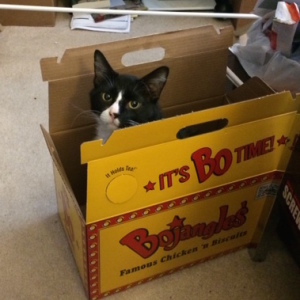
See? That’s my cat. In a Bojangle’s box. He’s fucking adorable.
So here are the guidelines, pulled straight from our website as of today, March 22, 2017.
All submissions should be sent to info@falstaffbooks.com with a query letter and the requested sample, sized by format as indicated above. Should your work be accepted by another publisher during the 45-60 day period of your manuscript’s consideration, we would appreciate you letting us know.
If I have met you personally, you can send it to my email address. Otherwise, use the main email address. This is because all the editors have access to it and everyone checks that email inbox. That means that your manuscript gets seen and evaluated faster. It helps us be more efficient.
Send a query letter. I want to know a little something about you and the book before I dive in. There are a lot of websites out there that will teach you how to write one. They won’t tell you this – if you don’t include anything, I won’t read the submission. I’ll email you a form rejection letter and move along. If you don’t care enough about the book to write a query to get me excited about the book and about working with you, then I don’t care enough to read your query letter. Also, without a query letter it’s just a random email with an attachment. And those get deleted immediately.
Simultaneous submissions are fine, but if the book gets picked up, let me know. That’s just basic courtesy.
Please format your work in Standard Manuscript Format, which is:
- MSWord documents ONLY (.doc and .docx format)
- I fucking hate RTF Files. I’m getting old and I need to be able to adjust the size of a document easily. Word lets me do that. I don’t write in Word. I don’t care what you write in. The publishing world works in MSWord, so fucking get a copy of it. Some of the free stuff out there is great, but some of it the formatting looks like a pile of assholes when you transfer it to Word, so you better be able to look at it in Word before you send it. And if you can look at in Word, why not just make it there?
- 12pt. Times New Roman Font
- Yes, goddammit, you have to use the right font. I find serif fonts easier to read, and 12-point is about the smallest my old eyes ca handle. When your business card says “Publisher” on it, you can set the rules to make your life easier.
- 1-inch Margins
- It makes things look uniform, and gives me some idea of how long your paragraphs will appear on the printed page. It’s a small thing, but the idea of blocks of grey space is something I think about, and at this point if a submission follows traditional guidelines, I get a sense of how dense the text is.
- Double-Space between lines
- I mentioned I’m getting old, right? I never expected to survive my twenties, and there are plenty of people who hung out with me who also didn’t expect it. But since I did, and now I’m in my forties, I’m fucking blind. Double-spaced used to be for manual edits, now it’s for old bastards who need help reading.
- DO NOT INDENT MANUALLY
- We make a shit ton of ebooks. Ebooks hate hard tabs. So don’t fucking use hard tabs in your document. Gain some facility with the rod processing software and set your preferences to indent the first line of each new paragraph. It’s one of the things you can do when you’re fixing the font and spacing. Someone is going to have to go back through and do this anyway, so you may as well do it from the start. I sure as fuck am not going to do it, so if you send me a manuscript full of manual indents (hard tabs), you’re getting the thing back with a note that says “get rid of all the fucking hard tabs” before edits.
- Number your pages in the UPPER-RIGHTHAND CORNER starting on the SECOND PAGE
- Help me keep track of where I am. Again, it’s something you set up at the beginning of a document.
- Please include your name, email, address, and phone number on the COVER PAGE
- I would like to know how to get in touch with you, just in case you’re fucking amazing.
- CHAPTERS must start on a NEW PAGE.
- Because that’s how fucking books work. Have you ever fucking read one?
Finally, please wait 45-60 days for our response to your submission. We will request more of your work or send a rejection during that time. Due to the large number of submissions we receive we will be unable to send a personal rejection with each submission, though we will do our best to do so when it comes to novels and novellas.
Those are our guidelines. They’re pretty simple, right? Just follow those, and your shit gets read. Don’t follow them, and you show me that you’re a special fucking snowflake that doesn’t take direction well. It speaks to how you will handle edits, and whether or not you’re a pain in the ass. Here’s a tip – working with a publisher is a multi-year engagement, and nobody wants to work with a pain in the ass for very long. So don’t suck. Put your best foot forward, because your submission is like a first date, and nobody farts at the table on the first date.
So take a fucking Bean-o and enjoy the lobster bisque.

by john | Aug 15, 2016 | Business of publishing, Writing
 Part 1 of this post got a lot of traffic, generated a fair amount of Facebook discussion, pissed some people off, and hopefully was useful to some of you. It also spawned my new podcast, Writing Rants, which is coming soon right to this here web space.
Part 1 of this post got a lot of traffic, generated a fair amount of Facebook discussion, pissed some people off, and hopefully was useful to some of you. It also spawned my new podcast, Writing Rants, which is coming soon right to this here web space.
I do want to clarify one thing about these two posts – if you are a multi-published author, most of this isn’t going to apply to you. If you have been working in the business for a while, you get to use adverbs, you get to start a story in the wrong place (#2 on the list – spoiler alert) and you sometimes get to use passive voice. Because you have been working in the field long enough to know how to do those things. Presumably.
But at least you have enough equity built up with editors through your publication history that we (I) are willing to give you a shot. If I know you, if we’ve met at a con and shared a table together, you get a lot more leeway than someone who I know nothing about. If your query letter comes in with a list of half a dozen published novels or a dozen or so published short stories, then I assume that if it starts off oddly, you know what you’re doing, and I’ll give you a little more time than someone who has no credits.
That’s not fair. I know. I also know that it isn’t fair I got cut from my Little League team. Bullshit. It’s totally fair, and it’s fine. I got cut from the team because I was too green and not athletic enough. Why did your story get rejected? Well, let’s continue on to the top two reasons I reject a submission.
#2 – Your story starts in the wrong place – I see this taking two forms. In the first, there are certain beginnings that cliché, or at least cliché for certain genres, and I just don’t want to see them. Here are a few things to avoid when submitting –
- Starting off in a dream – Don’t do it. It’s trite, it’s over done, and very seldom done well. Particularly avoid being clever and tricking the audience into thinking that what’s happening in the dream is actually part of the narrative, then jumping out of the metaphorical closet and yelling “GOTCHA!” it doesn’t make you a clever writer, it makes you a douche. And it makes you unreliable to the readers. Remember that every word you put onto the page is part of your contract with the readers, and if they don’t trust you, they will not be invested in the story.
- Getting up in the morning – Reading about someone getting ready for school or work isn’t interesting. We all get ready for school or work every day. Unless there’s something reaching through the mirror while your protagonist is shaving, don’t tell me they shave. Start in the action.
- Starting away from the protagonist – Unless you’re writing a thriller, and you’re starting the book with the Terrible Thing being performed by the villain, and we’re going to return tot he villain’s POV every once in a while throughout the book, Don’t start the book anywhere but focused on the protagonist. You have limited time to introduce the main character and get the audience to love her. Because they downloaded the first 10% for free on their Kindle, and if you don’t hook them in the sample, you won’t get them to buy the rest of the book. I know I download a LOT of samples, and I buy very few of the books I sample. If you want an example of a book that hooks you from the jump and almost forces you to buy it once you read the sample, try Alice
 by Christina Henry. It’s a helluva book and hooked me from the beginning.
by Christina Henry. It’s a helluva book and hooked me from the beginning.
Of Lips and Tongue by AG Carpenter is one that didn’t just hook me from the beginning of the book, it hooked me from the first line of the query letter. “Delaney Green is one of them that don’t burn.” It puts me into the world of the story in one line. I know that it’s Southern. I know that it’s supernatural. I know that supernatural things are somewhat accepted. I know that the character is locked askance at because of her abilities. I got all that from the first sentence of the query letter. I bought the novella, and two more.
In the second, the story just doesn’t do anything in the beginning. Sometimes an author spends too much time setting things up and introducing characters, and not enough time moving the action along and hooking a reader. Remember that I am a genre fiction reader, I’m a genre fiction publisher, and a genre fiction writer. We are not working in the literary fiction world, we are writing potboilers and page-turners. Shit has to happen. And it has to happen from the beginning. It’s not necessary that there be a fight scene on Page 1, but it’s also not bad.
With my book Genesis, the first draft of the book was awful. I started the book 100% in the wrong place. The premise of the movie is Red Dawn meets X-Men: First Class. An EMP destroys the world’s technology, and without the interference of all the tech, people are able to harness the elemental magic of the earth again. This ability only manifests itself in teenagers and people who are more open to change and magic (hippies). I started the book with the protagonist getting ready for school. Then I realized that no one gives a shit about that. so I started the book at the point where the EMP has hit and she and her brother are hauling ass out of the school. The book works much better when it starts in the right place.
By the way, Genesis has recently been uploaded for audiobook, so that will be available soon!
And I’m almost at my thousand word limit, so you’ll have to wait a little while to find out The #1 Reason Why I Rejected Your Manuscript.
And now time for a little shameless self-promotion –
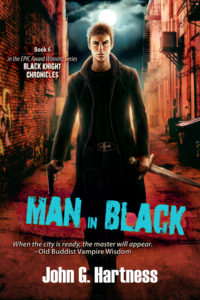 Black Knight Chronicles #6 – Man in Black
Black Knight Chronicles #6 – Man in Black releases today! It’s my book birthday, and yesterday was my birth birthday! So if you want to show the love, go buy the book! If you don’t have $6 to buy Man in Black, check out one of my other books. The Black Knight Chronicles Omnibus
releases today! It’s my book birthday, and yesterday was my birth birthday! So if you want to show the love, go buy the book! If you don’t have $6 to buy Man in Black, check out one of my other books. The Black Knight Chronicles Omnibus , collecting books 1-3, is on sale for $2.99.
, collecting books 1-3, is on sale for $2.99.
And if you have Kindle Unlimited, you can read most of my other work for free! For just $9.99 per month, you can read every Bubba the Monster Hunter story, every Quincy Harker story, and a ton of my other work as often as you like! And right now you can try KU for free for 30 days. Just click Join Amazon Kindle Unlimited 30-Day Free Trial.
If you like these blog posts, and want to see more of them, you can head over to my Patreon and pledge your support. I’ve changed my rewards around a bit, and there are some improved perks at different patron levels, so go check it out and fund my convention travel budget.





 Black Knight Chronicles #6 –
Black Knight Chronicles #6 – 